Minimum number states in the DFA accepting strings (base 3 i.e,, ternary form) congruent to 5 modulo 6?
I have tried but couldn't do it.
Minimum number states in the DFA accepting strings (base 3 i.e,, ternary form) congruent to 5 modulo 6?
I have tried but couldn't do it.
At first sight, It seems to have 6 states but then it can be minimised further.
Let's first see the state transition table:

Here, the states q0, q1, q2,...., q5 corresponds to the states with modulo 0,1,2,..., 5 respectively when divided by 6. q0 is our initial state and since we need modulo 5 therefore our final state will be q5
Few observations drawn from above state transition table:
The states which make transitions to the same states on the same inputs can be merged into a single state.
Note: Final and Non-final states can never be merged.
Therefore, we can merge q0, q2, q4 together and q1, q3 together leaving the state q5 aloof from collation.
The final Minimal DFA has 3 states as shown below:

Let's look at a few strings in the language:
12 = 1*3 + 2 = 5 ~ 5 (mod 6)
102 = 1*9 + 0*3 + 2 = 11 ~ 5 (mod 6)
122 = 1*9 + 2*3 + 2 = 17 ~ 5 (mod 6)
212 = 2*9 + 1*3 + 2 = 23 ~ 5 (mod 6)
1002 = 1*18 + 0*9 + 0*9 + 2 = 29 ~ 5 (mod 6)
We notice that all the strings end in 2. This makes sense since 6 is a multiple of 3 and the only way to get 5 from a multiple of 3 is to add 2. Based on this, we can try to solve the problem of strings congruent to 3 modulo 6:
10 = 3
100 = 9
120 = 15
210 = 21
1000 = 27
There's not a real pattern emerging, but consider this: every base-3 number ending in 0 is definitely divisible by 3. The ones that are even are also divisible by 6; so the odd numbers whose base-3 representation ends in 0 must be congruent to 3 mod 6. Because all the powers of 3 are odd, we know we have an odd number if the number of 1s in the string is odd.
So, our conditions are:
To get the minimum number of states in such a DFA, we can use the Myhill-Nerode theorem beginning with the empty string:
We have seen no new equivalence classes on new strings of length 3; so, we know we have seen all the equivalence classes. They are the following:
This means that a minimal DFA for our language has five states. Here is the DFA:
[0]
^
|
0
|
----->[e]--2-->[2]<-\
| ^ |
| | |
1 __1__/ /
| / /
| | 1
V V |
[1]--2-->[12]
^ |
| |
\___0___/
(transitions not pictured are self-loops on the respective states).
Note: I expected this DFA to have 6 states, as Welbog pointed out in the other answer, so I might have missed an equivalence class. However, the DFA seems right after checking a few examples and thinking about what it's doing: you can only get to accepting state [12] by seeing a 2 as the last symbol (definitely necessary) and you can only get to state [12] from state [1] and you must have seen an odd number of 1s to get to [1]…
The minimum number of states for almost all modulus problems is the base of the modulus. The general strategy is one state for every modulus, as transitions between moduli are independent of what the previous numbers were. For example, if you're in state r4 (representing x = 4 (mod 6)), and you encounter a 1 as your next input, your new modulus is 4x6+1 = 25 = 1 (mod 6), so the transition from r4 on input 1 is to r1. You'll find that the start state and r0 can be merged, for a total of 6 states.